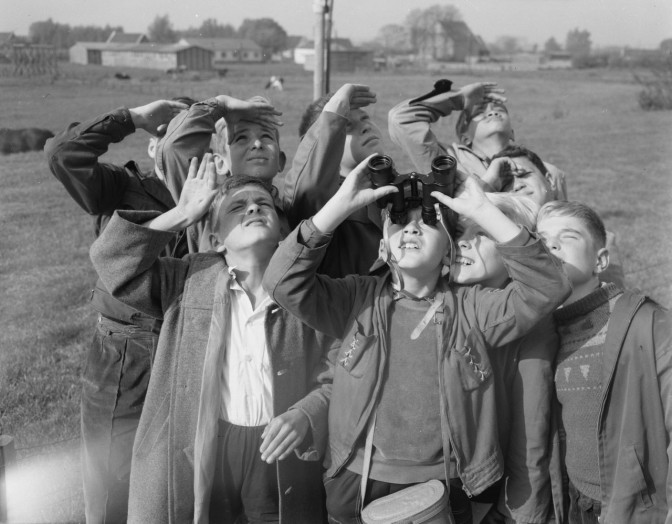Many of my research projects start with a survey of published literature: journals, books, and online trees. Here are five ways I assess the quality and reliability of these publications.
Sources
The first thing I look for are the sources:
- If the publication has no sources, there is no way to evaluate the quality of the underlying research.
- If the publication only lists other trees or published genealogies as sources, that implies the compiler did not do original research.
- If the publication cites derivative works, such as published sources and indexes, that shows that the compiler did not consult the originals, and there may be interpretation errors. This is typical for publications by many historians, who consider published originals as “primary sources” to be used without issue. For genealogy however, consulting the originals is key since the original records may have more information.
- If the publication lists original records, preferably with (linked) images, that suggests that the conclusions are built on actual research. I then look at the range of sources that were consulted to see how thorough the research was.
Logical information
The next thing I look for is whether the information is logical. For example:
- Do people do things in the proper order? For example, are birth dates before marriage dates, and are death dates after all the other events in a person’s life?
- Do the ages make sense? Do people have normal lifespans, do men have children between say 16 and 60 and women between say 16 and 45? People marrying for the first time in their forties or fifties could be a sign of a missing generation or misidentification.
- Do people have a normal number of children? Some online trees include people with dozens of children, sometimes with several children with the same names and birth dates. That suggests that the compiler combined multiple families into one, perhaps using automated hints.
- Are migration patterns logical? In the Netherlands, you would not expect to see a person who was born in Limburg show up in a marriage record in a small village in Groningen, and then have children in a town in Zeeland. People did not move around much, and if they did, they usually moved towards larger cities, often in the west of the country. I also take into account the occupation: a tax officer could be transferred across the country for his job, but it is unlikely that a farmer was. When people emigrate, I look if that fits with the pattern of emigration from the area, and if people moved to a common destination. Not matching this pattern does not mean that it did not happen, but it usually signals something unusual is going on.
- Are marriage partners logical? In the past, most people married within their social group. It is rare to see a scullery maid married to a landlord, for example, or for a minister to marry a farmer’s daughter. Nor was is common for a Roman Catholic man to marry a Protestant woman or vice versa. Finding two partners with different backgrounds is a red flag that there may be a problem, and additional verification is necessary.

Boys searching. Credits: J.D. Noske, collection Nationaal Archief (CC-BY)
Are conclusions explained?
Just because a tree cites original sources and has the events in the logical order does not mean that it was correctly assembled. Same-named people may have been confused, which is an easy mistake to make, especially when following automatic hints from genealogy websites.
When evaluating a publication, I look for explanations of why all these events pertain to the same person. This information can rarely be found in online trees, and may require contacting the researcher. In published articles, it is more common to see proof summaries or proof arguments that explain how the conclusions were reached, especially in the better journals.
Author
I then check out the person who created the tree or publication. Is it someone I know or interacted with before? Has this person had their work published in well-known journals? Does this person have an education or credentials that suggest they are experienced researchers, such as the CG® (Certified Genealogist) credential?
If I can’t find any indications that the person is an experienced researcher, that does not mean the quality of their work is low. But if the author has a solid reputation, it increases the chances that the research was reliable.
Contact the author
If possible, I contact the author to ask more background questions about their research. People rarely publish everything they have and may have additional evidence that is not shared publicly. Discussing the family with the author will give you a better understanding of the research they did, and how reliable it is. “I just copied it from some online tree” is a common reply, which does not inspire confidence.
Next steps
The above analysis will tell us how reliable the information appears to be, but we never trust anything we have not verified. The better documented the publication is, the easier it will be to verify using original records.


I like this article Yvette!
A way to check how trustworthy publications are. (Might be)
Are they worth looking into?
I do the same kind of thing, only not as systematically as this. Very good checklist.
I’ve started limiting the information in my online trees. I only include the year and location of an event. I want to trigger people to check a scan of the original source for themselves, and come to their own conclusions. For Dutch and Belgian church and civil records, accessibility has never been this great thanks to Family Search and the Belgian archives.
great advice – a very thorough summary that I will be bookmarking so I can refer others to it if necessary…